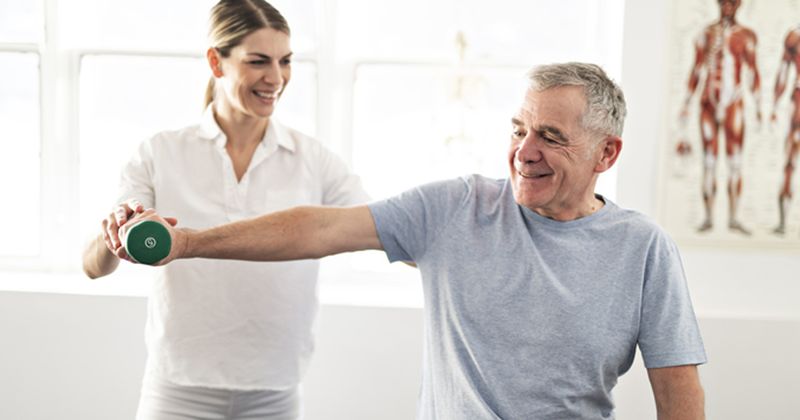Exercise intervention maintains sinus rhythm, reduces severity of AF symptoms
Adults with symptomatic AF who followed a 6-month exercise intervention that combined supervised exercise and home-based physical activity had significant improvements in freedom from AF and symptom severity compared with usual care.
“We observed all of these changes in the absence of any notable difference in blood pressure, body mass index or measures of cardiac function and remodeling among the exercise group compared to our control group,” Adrian Elliott, PhD, MSc, physiologist at the University of Adelaide, Australia, said during a presentation at the European Society of Cardiology Congress. “Exercise training and physical activity should be recommended in patients with atrial fibrillation to promote the maintenance of sinus rhythm and to reduce the severity of AF-related symptoms.”

The randomized trial enrolled 120 patients with symptomatic paroxysmal or persistent AF whose weekly physical activity was less than 60 minutes (mean age, 65 years; 42% women; mean BMI, 31 kg/m2). Half of the cohort was randomly assigned to the exercise intervention and the other half to usual care. Patients in the exercise intervention group attended supervised exercise visits and increased their home-based exercise by 20% per week, up to 210 minutes per week. Those assigned usual care received education on the benefits of physical activity and were recommended to participate in 150 minutes of physical activity per week. Repeat visits occurred at 3 months to reinforce the value of physical activity.
At 6 months, patients in the exercise intervention group attended an average of 18 supervised exercise visits and achieved a mean of 177 minutes of home-based physical activity.
The co-primary endpoints were freedom from AF and AF symptom severity measured by the AF Symptom Severity questionnaire at 6 months and 12 months. Approximately 40% of patients in the exercise intervention group were free from AF at 1 year compared with 20% of patients in the usual care group (HR = 0.5; 95% CI, 0.33-0.78; P = .0018). Those in the exercise intervention group yielded greater improvements in AF symptom severity at both 6 months (P = .033) and 12 months (P = .041) compared with the usual care group.
At 12 months, total AF symptom burden and AF symptom frequency were lower in the exercise intervention group. There was no difference in AF symptom duration.
“The efficacy of our intervention to improve cardiorespiratory fitness can be seen through the improvements in peak oxygen consumption at 6 months,” Elliott said during the presentation. “Importantly, these differences persisted at 12 months, indicating that these cardiopulmonary adaptations were durable. ... [W]e observed no significant change in body mass index or blood pressure with the exercise intervention, indicating that these benefits of exercise and physical activity were achieved independent of changes in the other risk factors, such as obesity and hypertension.”

